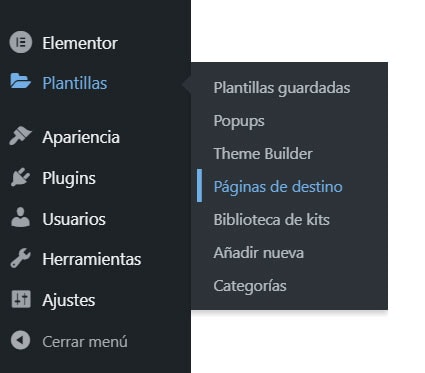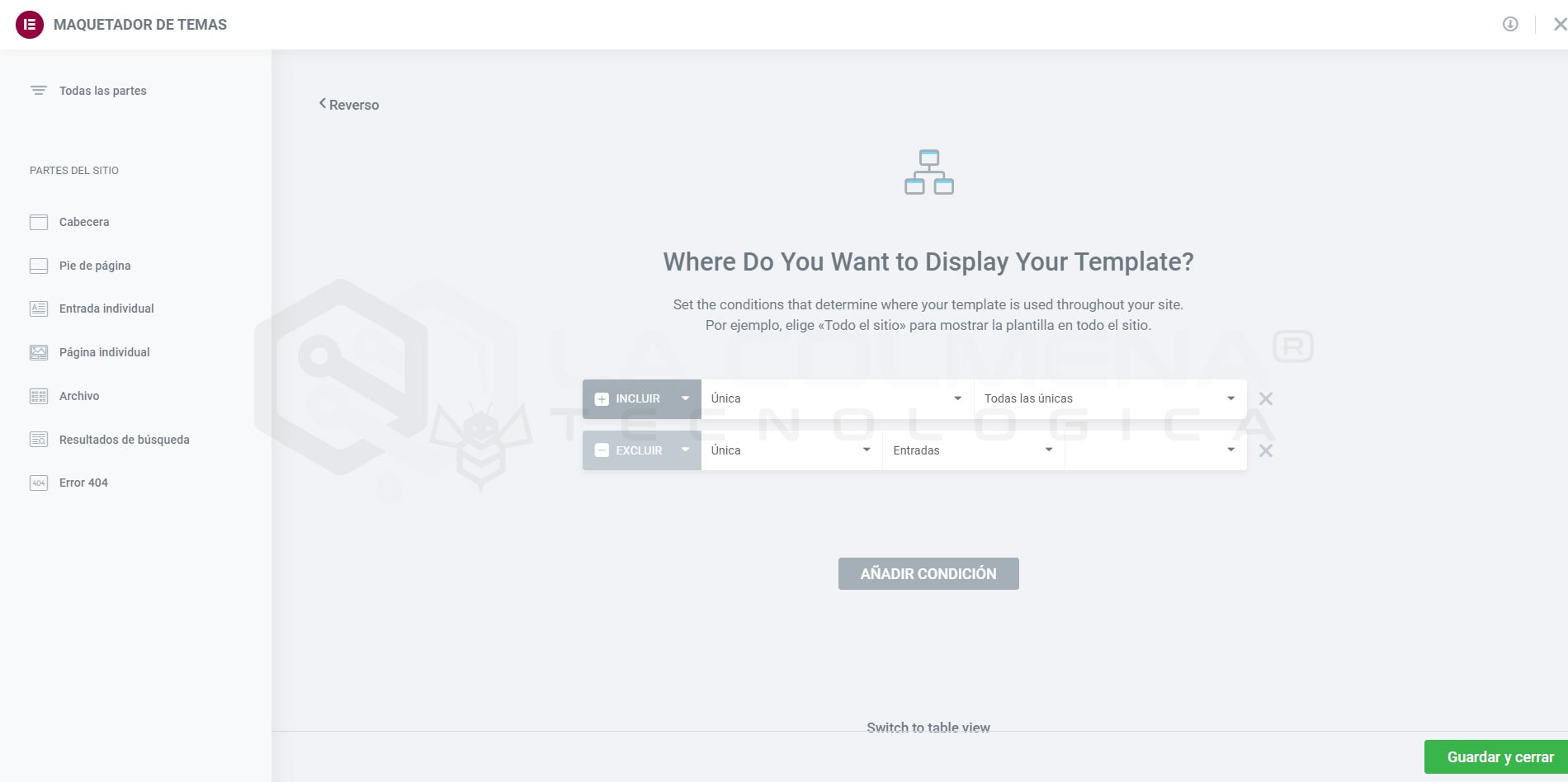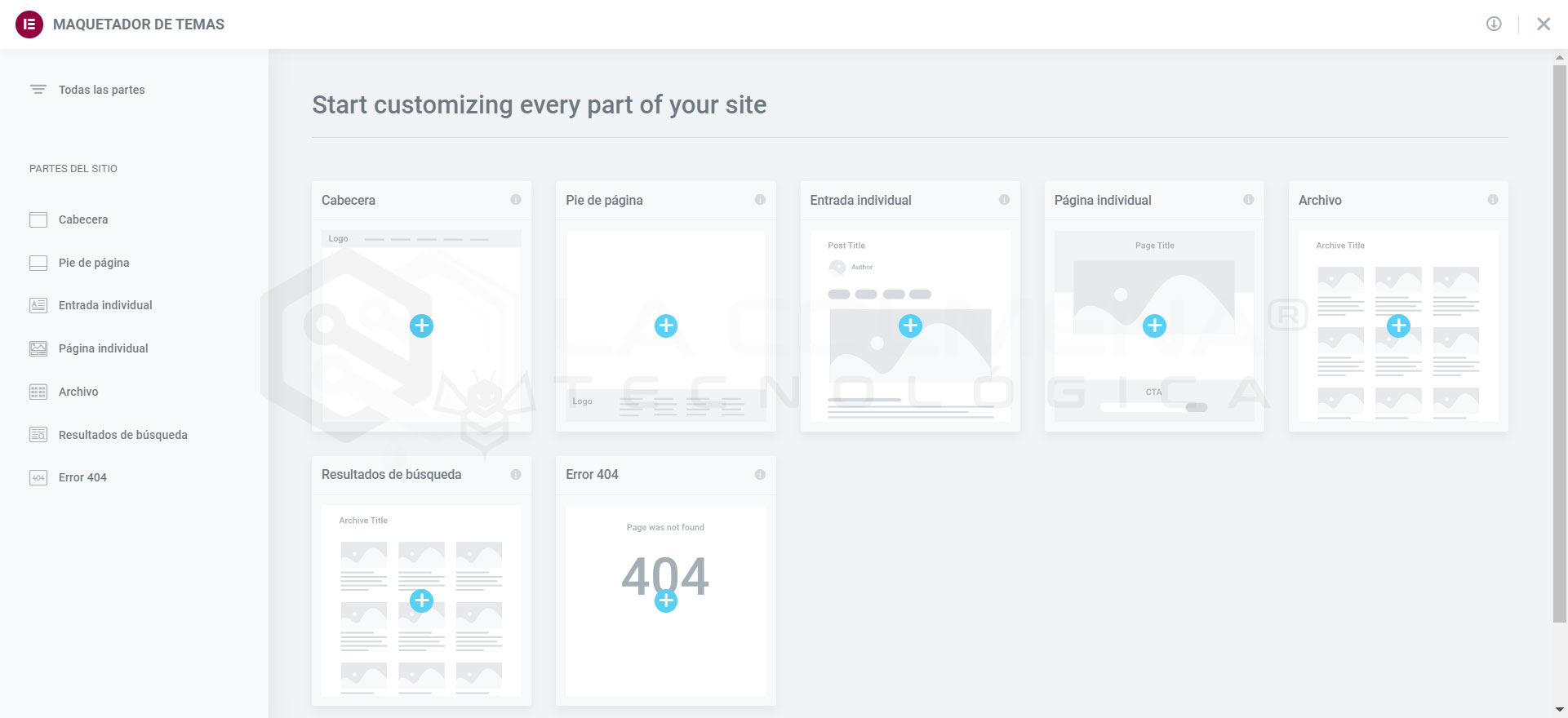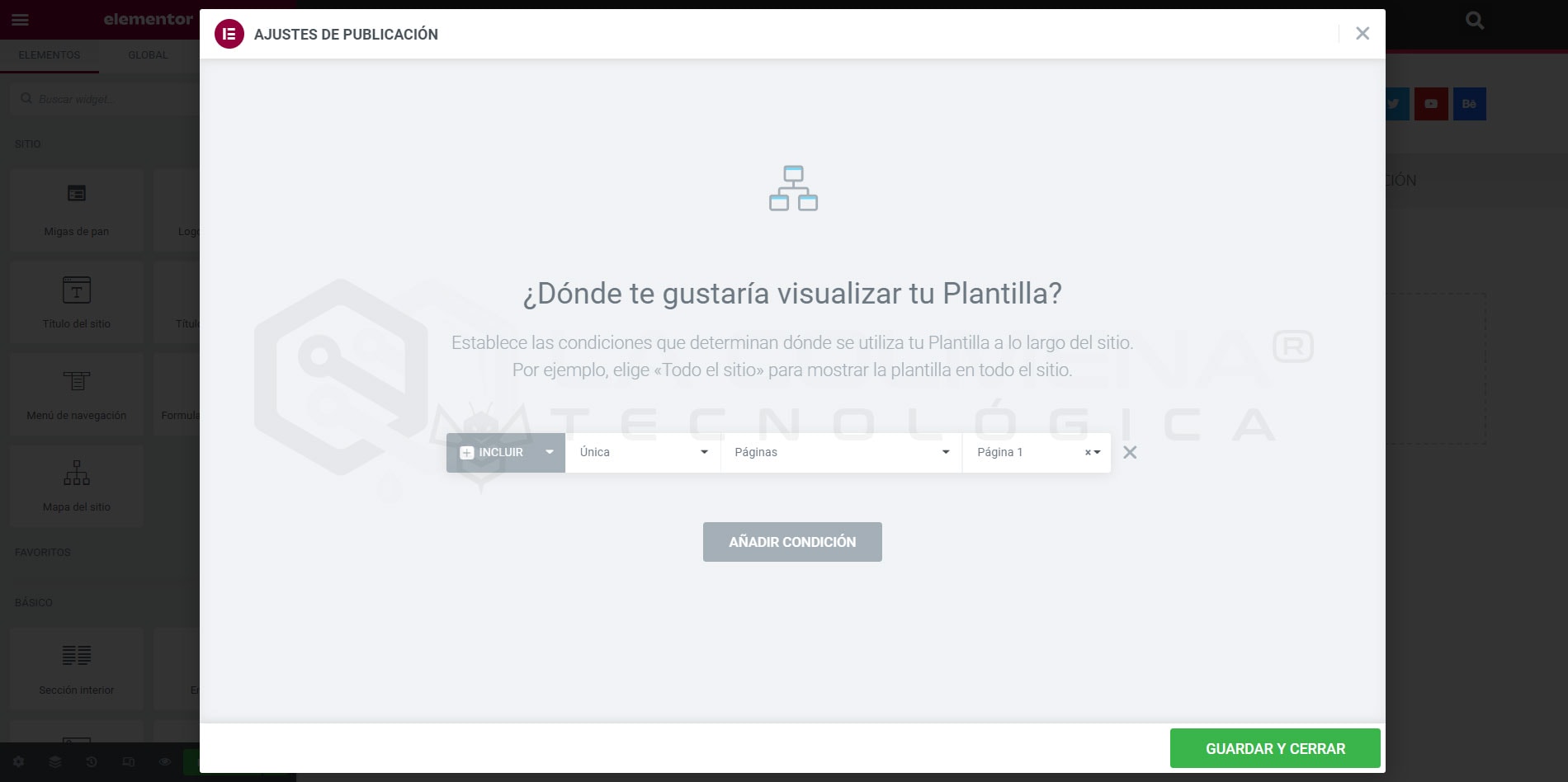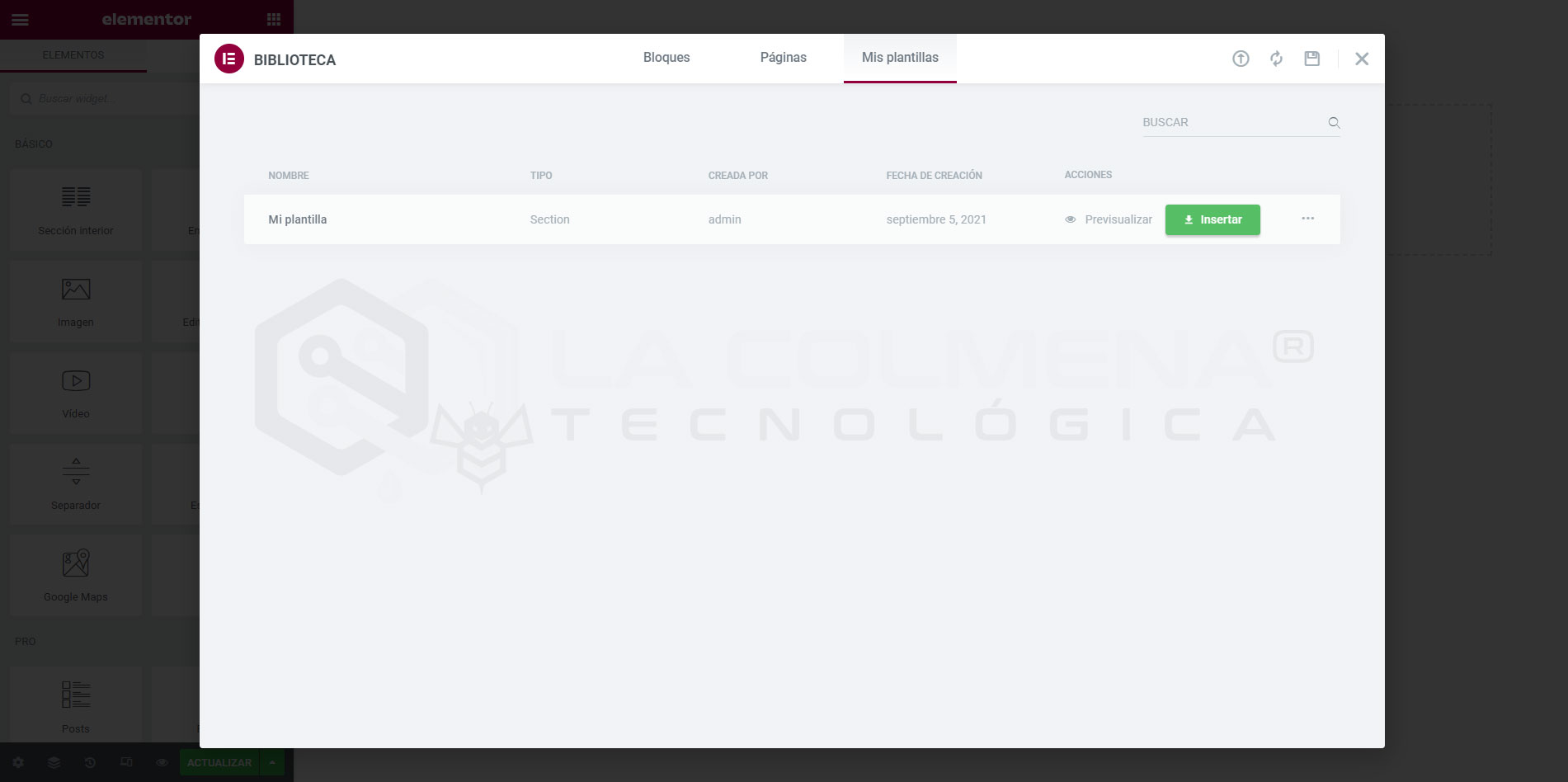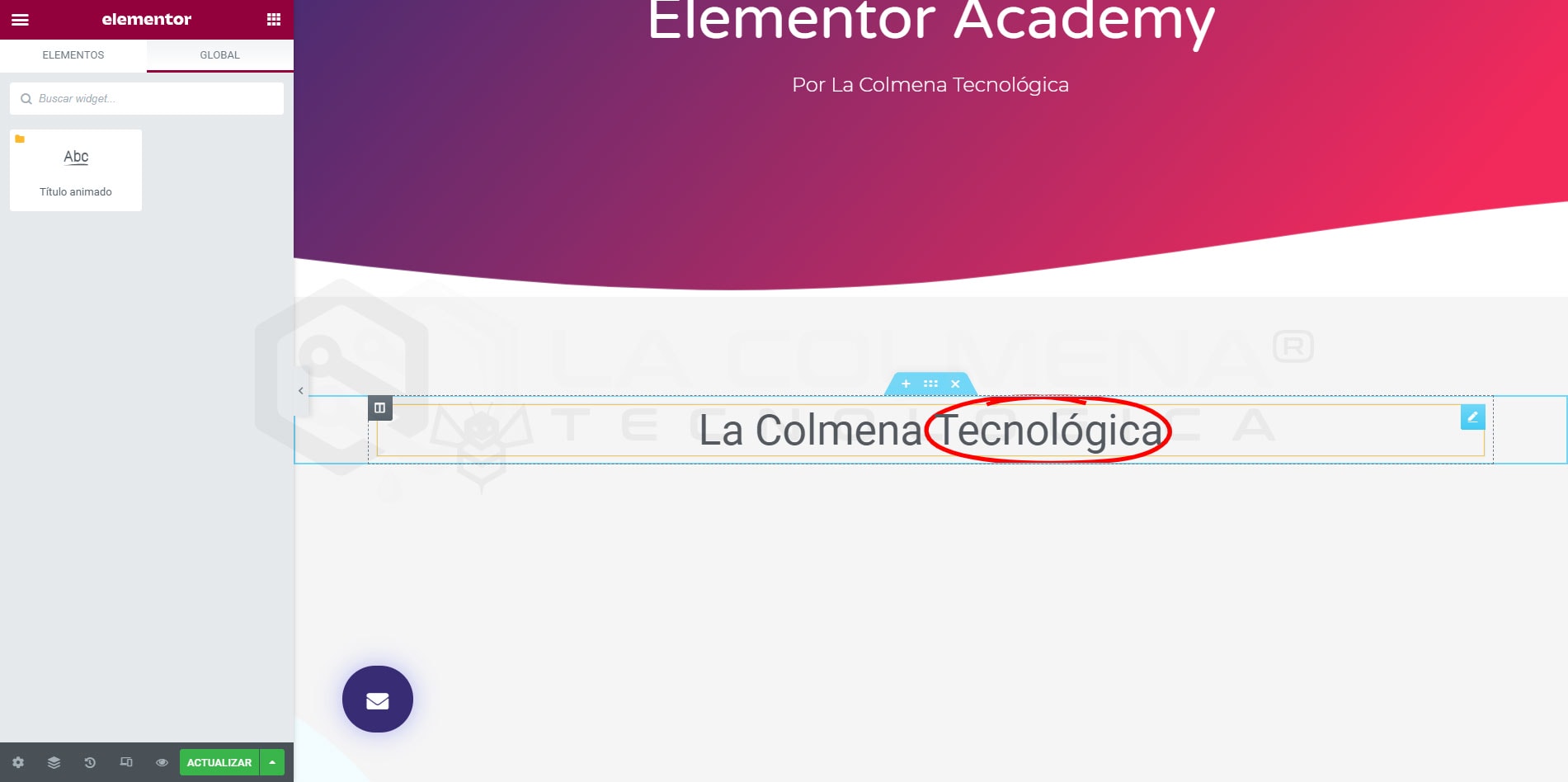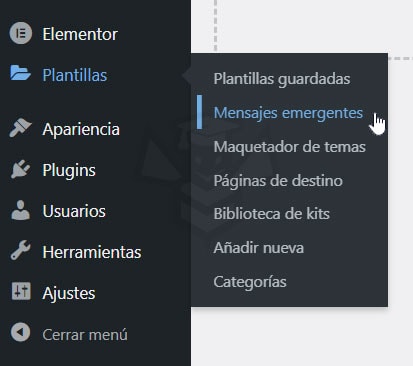Adding a landing page template in Elementor
> Templates
- What is a landing page?
- The key difference between a home page and a landing page
- Types of landing pages
- Lead generation landing pages
- Click landing pages
- Drive traffic to landing pages
- Paid search traffic
- Paid social traffic
- E-mail campaigns
- Organic search traffic
Elementor already has a set of pre-designed landing page templates, using this type of templates will make our work much easier, since we will only have to insert them and then modify them to adapt them to our liking.
To access the templates follow this path in the WordPress menu:
WP > Templates > Landing pages
Then click on the Add new button. The Elementor builder will open and also a popup window for selecting a template.
We can click on any of the templates to see what it looks like and decide if it suits our needs. Once we have decided, we click on the Insert button.
To be able to insert templates you need to have an activated Elementor Pro license or have the free account logged in. Templates that have a PRO or EXPERT badge are only accessible if you have an activated Elementor Pro license.
What is a landing page?
In digital marketing, a landing page is a stand-alone web page created specifically for a marketing or advertising campaign. It’s where a visitor “lands” which is why it’s also called a landing page, after clicking on a link in an email or on ads on Google, Bing, YouTube, Facebook, Instagram, Twitter or similar places on the web.
Unlike web pages, which typically have many objectives and encourage exploration, landing pages are designed with a single focus or objective, known as a call to action (or CTA, for short).
It is this approach that makes landing pages the best option for increasing the conversion rates of your marketing campaigns and reducing the cost of acquiring a lead or sale. Landing pages are part of the marketing funnel of a marketing campaign.
In the image you can see how the landing page is part of the funnel with which prospects or leads will land when they click on the link located in an ad, email or anywhere else on your website. It is where the conversion (such as a purchase, subscription or registration) will take place.
The key difference between a home page and a landing page
Or why landing pages are so good at converting
The home page has tons of links and the landing page only has one, that’s pretty typical. While the home page has dozens of potential distractions, you can basically call them “leaks” instead of links, the landing page is super focused. Having fewer links on your landing page increases conversions, as there are fewer enticing clicks that will draw visitors away from the call to action. That’s why marketers always use a dedicated landing page as the destination for their traffic.
Sure, the home page looks amazing. It showcases the brand, allows people to explore a range of products and offers additional information about the company and its values. From here, a visitor can go anywhere: apply for a job, read some press releases, review the terms of service, post in the community forums, and so on.
But they will not necessarily make a purchase. And that is the point.
This client’s landing page has a completely different purpose. Coupled with super slick ads promoting a single offer, it all works hard to convert these visitors into customers. It’s doing a better job of converting the traffic the brand is already receiving. That’s the power of landing pages!
Types of landing pages
You will see a lot of variation, depending on the specifics of the business, but there are really two archetypal landing pages (defined by their objectives):
Lead generation landing pages
Also called lead gen or lead capture pages, they use a form as a call to action. This form almost always collects lead data, such as the names and email addresses of visitors.
B2B marketers and companies selling high-priced items use this type of landing page to build a list of potential customers. Sometimes they offer something for free, such as an e-book or webinar, in exchange for contact information. E-commerce brands can also use these pages to create lists or offer free shipping or special offers as well.
Click landing pages
Landing pages using e-commerce and SaaS (software as a service) are often used directly for sales or subscriptions. They usually have a simple button as a call to action that sends the visitor to the payment flow (such as the app store) or completes a transaction.
Drive traffic to landing pages
You will need to fill that funnel with visitors for your landing page to work. Fortunately, you have many options. Let’s explore some of the most common sources of traffic to landing pages.
Paid search traffic
Most search engines include paid advertising. When someone searches for something (e.g., “landing pages”), these ads appear clearly marked, though not too clearly marked, in the search results. A typical example from Google is shown below:
Unlike the other results on the page, marketers prepare and pay for pay-per-click ads. Someone who clicks through will be primed by your lovely copy (and, sometimes, your images). And you have likely targeted them based on your search term, demographics or interests revealed by your browsing history.
Fundamentally, when you create an ad, you can choose where the link takes your visitor. Yes, you can choose to send them to your home page. But, as we’ll explore below, it’s much better to create a separate landing page that matches your ad copy and offers a clear call to action.
Paid social traffic
Post ads on social networking sites such as Facebook , Instagram , Twitter o LinkedIn is a great way to target people and communities that will be particularly interested in your brand, regardless of whether they are already in the market.
Instead of people searching for “chanel handbags”, you can advertise to people who have added “fashion” to their list of interests on their Facebook profile. The interesting thing about this is that you can connect with customers before they start looking for your product, or before they even want it!
In addition to offering advanced targeting features, each social channel has its own characteristics. Instagram, for example, works well for lifestyle products and brands with strong visual appeal. On the other hand, B2B advertisers prefer to use LinkedIn to reach professionals working in specific industries.
E-mail campaigns
Email is often touted as the most effective marketing channel available because of its enormous reach (and low costs) compared to other platforms. A 2018 study by Radicati Group projects that there will be 4.2 billion email users by 2022. That’s more than half the planet!
A powerful combination of emails and landing pages can be used to both nurture existing customer relationships and acquire new ones. After creating a contact list, your carefully crafted email allows you to engage readers with your offer, while the landing page fills in the details and directs visitors to a call to action.
Organic search traffic
The term “organic traffic” refers to any visitor coming from a free source, such as the bottom half of Google or Bing search results (SERP). By creating engaging and legitimately useful content on your website or landing pages, you can ensure that your company appears more frequently in related searches. The higher the content, the better.
However, calling it “unpaid” is a bit misleading. It does not mean that there is no time or money invested in sorting. There is a whole field of professionals dedicated to squeezing as much organic traffic from Google as possible through a balance of careful strategy, technical know-how and compelling content creation. That’s SEO in a nutshell, search engine optimization.

Subscribe and receive notices of new content
Related topics
Header and Footer template in Elementor
true
13:21
0.0/5
Introduction to Elementor, Templates
Elementor global widget template
true
07:00
0.0/5
Introduction to Elementor, Templates
{{ reviewsTotal }}{{ options.labels.singularReviewCountLabel }}
{{ reviewsTotal }}{{ options.labels.pluralReviewCountLabel }}
{{ options.labels.newReviewButton }}
{{ userData.canReview.message }}
